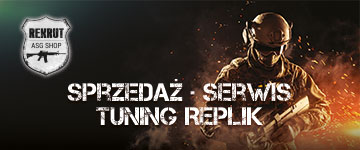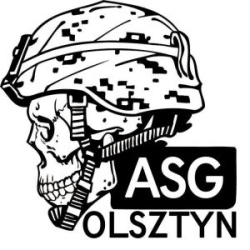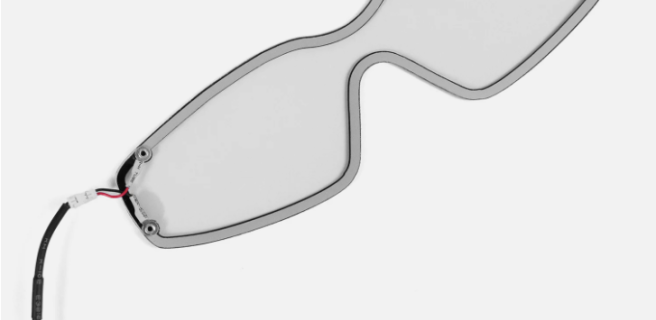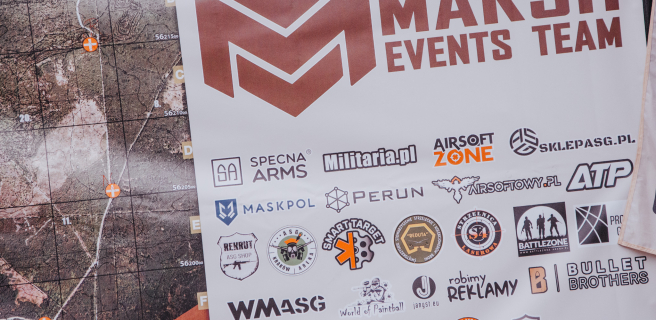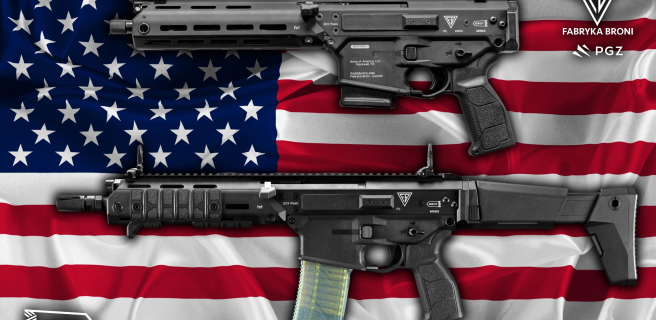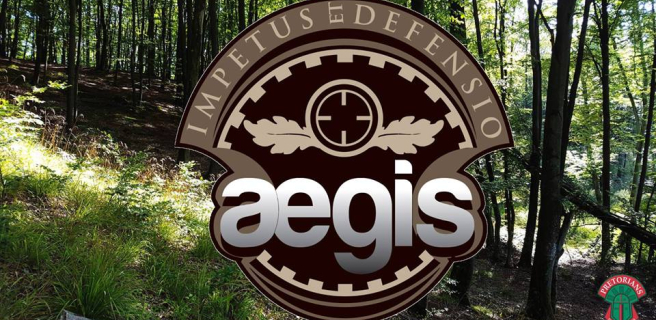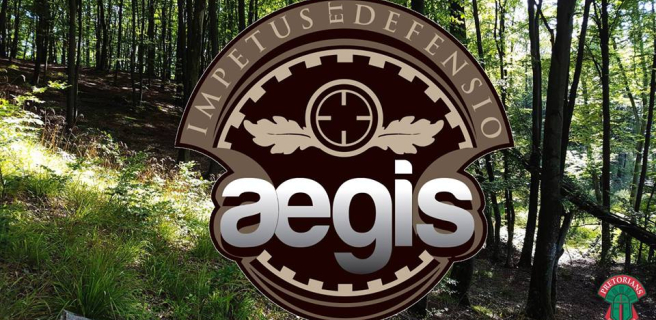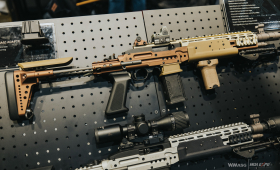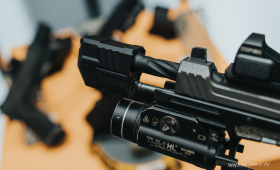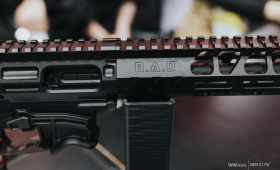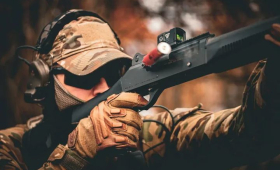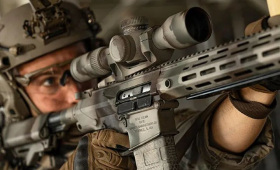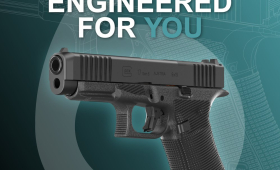NAFU Milsim Foxtrot
Introduction
SNAFU Milsim Foxtrot was the sixth event in the SNAFU series, and the first milsim in this series. So far three Camps have been held (Alfa, Bravo, Delta), i.e. events that mainly dealt with training exercises, and 2 Operations (Charlie and Echo), full-sized semi milsims. While the first four events, according to the participants, were very successful, the fifth (Echo) had a mixed reception. During its development, SNAFU has become a recognizable brand, and rightly so. In terms of the number of players, from the initial level of around 20 during Alpha, it increased to about 200 during Echo. Although teams from the Warsaw community constituted the majority all the participants, groups from other parts of Poland were also present.
After the Echo event, the most recognizable members of the organizing team left. Therefore, although most of the organizers remained, a great question arose weather this SNAFU event will be a good one.

Accommodation and the game area
Previous SNAFU events have accustomed us to a high level in terms of accommodation. In particular, this concerned Delta and Echo events, where the pool and showers were a sensation. This time, the event went back to the Julianówka recreation centre, near Mińsk Mazowiecki, the place where the first Camp, Alpha, took place. The admission fee (50 PLN) provided a place for a tent or the possibility to sleep in a barn with a fireplace, but due to the drafts in the barn, the temperature in it did not deviate from the one outside. For an additional fee, you could rent a summer house, with unprecedented comforts such as warm showers and beds. In practice, however, there weren't enough houses for everyone, including us. As for the tents, our borrowed NS type tent was the only tent standing in recreation centre, other players either managed to get a house, or slept in their cars, or they came to the game itself, without spending the night before at the site. However, it should be mentioned that the place for the tent we got was almost royal. We could set up the tent on a wooden floor, which insulated the cold from the ground well. There was a toilet and wash basin available for everyone, unfortunately with cold water. In addition, the whole area of the centre was marshy. It was not possible to move around the area without getting ones feet. Another problem that must be mentioned was accessibility of the site. If someone commuted to the centre from the east, he had a good chance to get stuck in a muddy road. It happened to us, but from conversations with other players, we knew that we were not the only ones. Unfortunately, the organizers did not take adequate care to warn people against accessing the centre from that side.
As for the terrain on which the scenario was played, it was definitely not small. In total, it was played on area measuring approximately 10 square kilometers. The terrain wasn't easy. It was flat but had a lot of water obstacles. Numerous swamps and several streams definitely raised the bar of the game. Associating it with "Vietnam" was on everyone's mind. From the negatives, local residents made sure that we could also associate it with a "dumpster".

The scenario and game mechanics
The scenario's backstory assumed that both sides were belonged to superpowers (the Westgard and the Eastland) carrying out a reconnaissance of an area rich in natural resources with an active guerrillas. The tasks of both sides were symmetrical, except for the location of the points, which was different. It was only at the end that both sides had two common points, the Airport and the Radar. However, before it came to securing these installations, players had to find supply drops, make contact with the guerrillas, find a scientist, take samples and conduct and initial analysis. As you can see, there were a lot of tasks and only the last ones forced a conflict between sides. Interestingly, not all tasks were known in advance, some of them were revealed only after one of the previous tasks was completed.
The whole was planned for 10 hours of continuous operation in the field. In other words, less than Echo or Charlie, but due to the numerous downtimes during Charlie and Echo events, the difference was not as big as it might seem. In any case, this reduction in the length of the game caused that some groups decided not to come.
As the basis of the mechanics, the SMS rules were used, which were successfully applied and refined on previous editions. It is true that the name of the rules is the wording of Semi Milsim, but it did not prevent the organizers from applying them in the full milsim, which Foxtrot was.
One of the changes was that the organizer supplied the ammunition. Of course, this was related to the fact that the amount of ammunition that players received at the beginning was very limited. In the case of one side, that was 3 magazines per person, in the case of the of second, about 2.25 magazine (which roughly means that each side had about 170 magazines to be divided among all of their members). A slight confusion was introduced by the fact that the information given to the commander indicated that there would be about four magazines per player, so this change unpleasantly surprised everyone.
A lot of emotions (in the negative sense of this word) aroused the issue of choosing the weight of the BBs. As the organizers delivered the BBs, for obvious reasons it was necessary to limit the choice. Based on the surveys made during registration, the organizer chose G&G BBs weighing 0.28 g and 0.3 g. As a curiosity, it should be added that when it came actually dividing the BBs among the players, at least in case of the side wearing hats, the 0.28 g BBs ran out and the BBs that were so eagerly asked for in the surveys were in excess.
It was our first event with such a stiff limit of BBs and to tell you the truth, we have a mixed feelings about it. On the one hand, this limitation caused that the task with the supply drop gained a key role, on the other hand I'm not sure if this confusion and restrictions on the players' playing style were worth it.

Division of the side
Just like during the Operation, the division was made in relation to the headgear. On one side the Hats fought, which played the role of the Westegard unit, and on the other the Helmets fighting as Eastlandia. This division worked well on previous editions. At operations Charlie and Echo the Hats had the numbers but the Helmets had the advantage in the amount of equipment enabling night operations. This time, both of these advantages were on the side of Helmets, because 76 of them arrived on Foxtrot and they still had a definite advantage in the amount of night-vision and thermovision equipment. 57 players fought on the side of the Hats and they have very little night time equipment.
In other words, the side of the Helmets had a big advantage this time. The scenario, however, was prepared in such a way that it made greater significance only at the end of the game. In addition, probably to offset the advantage of the Helmets, they were granted less ammunition per person.
The morning, a complete mess on the Hats side aka SNAFU with the Command
In the morning of the game day a chronograph test connected with issuing maps of the area was conducted, after which the commanders of groups assigned to the Hats side (Helmets took off at another point) went along with their second in command for a briefing. There, a small atomic bomb was dropped in the guise of information, that the Hats' commander would not come, and the player he had designated to replace him did not arrive yet. It should be added that the organizers learned about the absence of the commander a few hours before the event. Therefore individual the groups' commanders had to collectively adapt the plan of the absent commander to the force available not fully realizing which parts of the plan were ordered by the OPORD and which were the commander's own ideas. Fortunately, at the end of the meeting, the deputy came in and the the plan was finally put together. Unfortunately, several times during the game, it was obvious that the deputy did not have time to prepare well.
Also, such a long briefing delayed our entry into the game area by several dozen minutes. After the briefing, ammo was finally delivered to us and a careful loading was conducted so as not to lose a single BB. After that we tested our radios, one of which refused to function and we had to exchange it for a spare one. Than we were finally ready to set off into the battlefield. About half an hour late. It should be mentioned here that the only positive aspect resulting from the fact that the commander did not arrive, was that his idea to use Facebook Messenger for communication between individual groups commanders, was dropped immediately in favour of standard radio communication. This gave the game a better atmosphere and gave people some more joy.

The game
The Hats' Strategy was to conduct activities in numerous small teams to perform assigned tasks. Some of the forces were sent to perform the scenario tasks, some to do supporting tasks, such as setting up a patrol base. In other words, some teams were kept in reserve.
Our team, after various hiccups (initially we had a completely different task), was assigned the task of Echo team, i.e. finding the supplies. For this purpose, we had to search through 7 points. After reaching the first one and finding out that there was nothing there, we made an attempt to contact the Commander. He did not answer on the radio, but by some coincidence, the commanding team was passing by. It turned out that they had a radio failure, therefore our team took over contact with the HQ and contact with the commander was done via phone. When we asked whether the supply may be hidden and whether it will be all at one point or spread between a few of them (the orders for the Echo team were not precise on this regard), we got the answer that it could be hidden. So we searched through everything, every piece of garbage (and there were tons of them), every hole, every cavity within a 100-meter radius of the point designated by the GPS. Then we went to the next point and repeated the procedure, and so on. There were no contacts and due to not finding the supplies, just looking through a lot of rubbish (this is something that we always wanted to do on a milsim - check whether there is no hidden package under a thrown out toilet seat) our morale began to drop. While our radio operator tried unsuccessfully to connect to the HQ, we thoroughly reviewed the FRAGO and in the introduction we found information that it was supposed to be a single supply drop.

Without wasting time, we went to the next point (we had numerous contracts with civilians on bicycles while at it) and the next (which had a heap of manure in the vicinity). On the way to the next one (sixth in total) we came across the damn supply drop. As it turned out, we searched through every nook and cranny needlessly because the drop was visible from a distance. It was in the form of a cardboard box with a spread parachute attached to it. After a brief discussion with the Commander, we decided to deliver the entire package (weighing ~ 10 kg) to the patrol base, without opening it first. The Command sent us the location of the patrol base and we went there on full alert and in proper formation. Along the way, after 3 attempts, we managed to make contact with the HQ and we reported that the patrol base had been established. As it turned out, it was not one of the goals included in the OPORD. As for other tasks, this time included in the OPORD, we did not have any reports on what was going on.
We reached a place where, according to the SMS, the base should, but we have found out that there was nothing there. At first we were angry with the navigator (that would be me), but it turned out that the Commander sent bad coordinates. The situation has become so complicated that we have sent these coordinates to other teams through our radio. While our radio operator tried to solve the problem, we arrived at the patrol base.
At that time, the rest of the Hats teams were performing their tasks. We managed to make contact with the local guerrilla liaison, despite the fact that the command did not give radio frequency to do this. Another team reached the airport but, for unknown reasons, did not check it in terms of its usability. The Commander's team formed the patrol base. The team that started to take samples (our original task) encountered resistance, contact with the enemy and numerous terrain obstacles. Ultimately, the Hats were able to take samples from the Mine, but not enough of them.
In the meantime, the Helmets managed to get captives. According to the mechanics, the organizer threw his die and decided that the prisoners could lie. The Helmets got stories about 120 operators with numerous mechanical support. In addition, the Helms also reached the local guerrilla liaison. However, they did not take samples during the day, and despite searching a large number of the drop points, they did not find their supplies.

As for the supply, we finally opened a package at the patrol base. There, apart from a large amount of ammunition, we found a lot of content to improve morale: Mamba gum, jellies, money to pay for the scientist, cigarettes, plum flavored liquor (as it turned out, the organizers poured the alcohol out), condoms, pills for potency and porn magazines. As you can expect, the morale has increased.
After a short rest, we went with Bravo team to the airport to secure it. Along the way, we passed one place when we expected an ambush, which significantly delayed our arrival and caused that we came to the airport after dark. There, Bravo team stayed behind to secure our rear. We along with Echo-2 we went to the airport. According to the plan, just before the airport, we went southeast. Echo-2 opens fire at the airport. On the radio, we get an order from command to not get involved, because help is on the way. After about 30 minutes of waiting, we asked when help would come, and in response we got information that all the teams except Charlie have other tasks. Charlie is 1.5 km from the airport. Before we managed to make a decision to withdraw, I found out that Echo-2 had been taken out and we are attacked from three sides by people with night-vision goggles, who have numerical and tactical advantage, and on top of that, the initiative. We perish.

At that time, the Hats took the scientist and were transporting him to the patrol base, where samples were also provided for analysis. The Helmets, in turn, found the ammunition store of the guerrilla and got their own scientist. Then they concentrated the vast majority of their forces at the Airport. The very forces we stumbled upon there.
After our death, the Hats decided that the Airport is lost. That is why they focused on doing the second part of the task: sending data analysis using the Radar. After doing this, they reported to the HQ about the impossibility of securing the Airport, so they got a second evacuation point. The evacuation was carried out, or rather the remains of Hats evacuated as they sustained quite significant losses in the meantime.
Helmets have gone for samples at this time. However, no full preliminary analysis was made, and they also refused to send complete analytical data. They demanded an evacuation instead which took place at around 20 o'clock.

The end
The final score was 31 to 30 for the Hats. The game turned out to be quite a challenge for many, there were cases of people sinking shoulders deep in mud, therefore, even when it was allowed, none of those who had finished earlier decided to come back to the game again. For those who came to Julianówka after the game, pea soup and traditional SNAFU patches were waiting, this time with the letter F. Additionally, people who were on all SNAFU editions got a special patch. The whole milsim, despite some problems, was definitely a positive experience. A good scenario, tasks that help us immerse in the game, demanding opponents. What more could you want?
Certainly, our group will go to the Golf event, if it will be organized.


